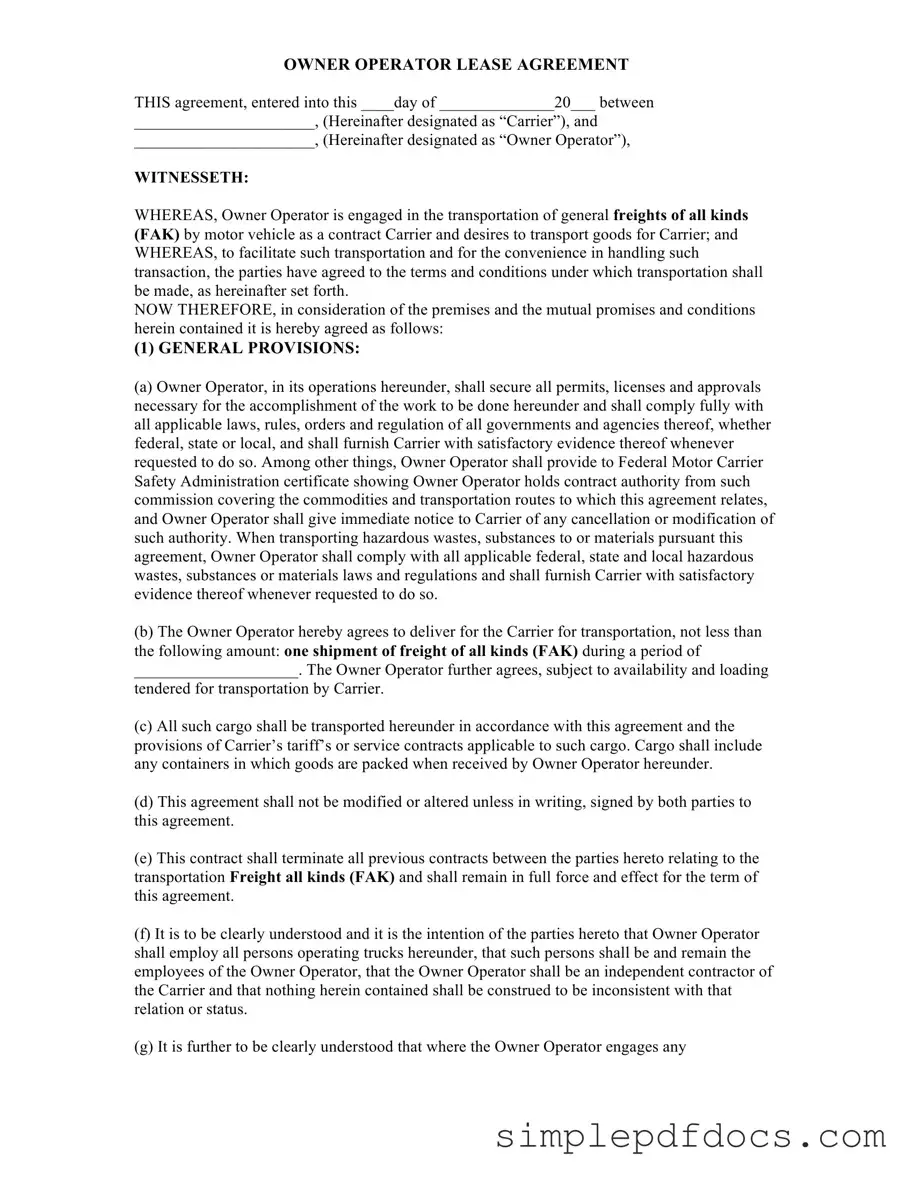The Owner Operator Lease Agreement is a crucial document that outlines the relationship between a carrier and an owner-operator in the transportation industry. This agreement serves to define the responsibilities, obligations, and rights of both parties as they work together to transport goods. It begins by establishing the general provisions, which require the owner-operator to secure all necessary permits and comply with applicable laws and regulations. This ensures that the owner-operator is legally authorized to carry out transportation services. The agreement also specifies the types of cargo to be transported and the required documentation, such as written receipts for goods received. Additionally, it emphasizes the importance of insurance coverage, mandating that the owner-operator maintain adequate insurance to protect against loss or damage during transportation. Furthermore, the lease agreement addresses liability issues, making it clear that the owner-operator assumes responsibility for the safe transport of goods, including any hazardous materials. Confidentiality clauses protect sensitive information, while provisions for compensation detail how and when payments will be made. Overall, this agreement is designed to foster a clear understanding between the carrier and owner-operator, ensuring a smooth operation in the transportation of goods.
